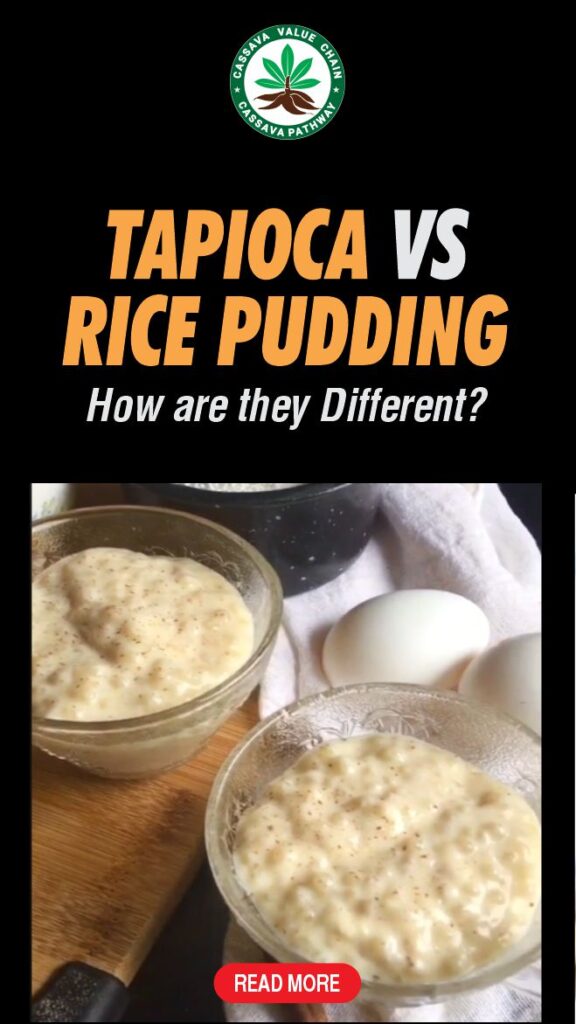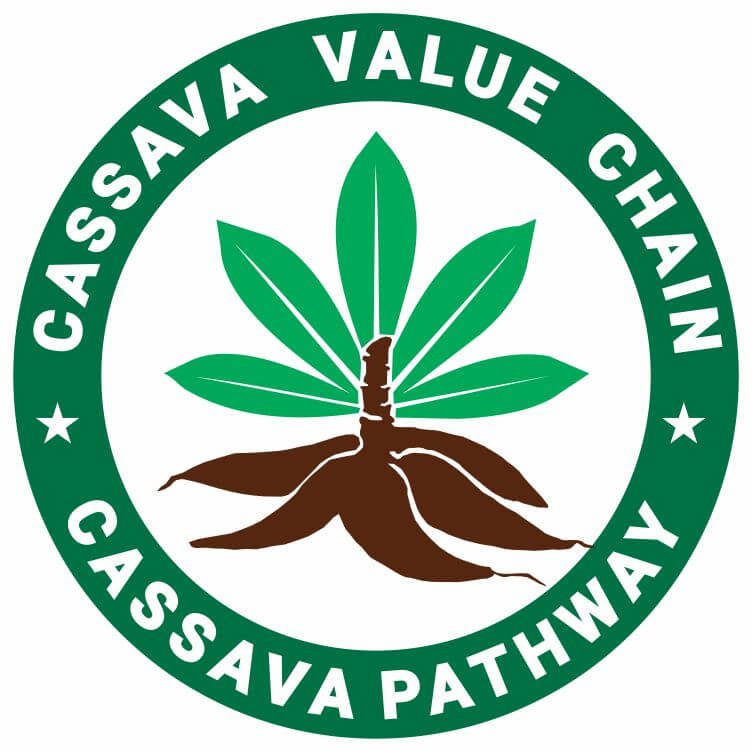Torn between tapioca vs rice pudding? Both are creamy, sweet, and delicious, but which one is healthier? Let’s break down their nutrition, texture, and taste to find your perfect dessert!
If you are standing in your kitchen wondering which dessert to prepare, tapioca pudding or rice pudding, you are not alone.
These two creamy and comforting treats have been served in homes across the world for generations.
They look similar in a bowl, but when you taste them, you’ll realize they are quite different.
So, how do you choose between them? In this guide, you will learn everything about tapioca pudding and rice pudding: their ingredients, textures, nutritional differences, and how they fit into different food cultures.
By the end, you’ll know which one suits your taste and lifestyle best.
Related: Guide to Tapioca: Everything to Know

Table of Contents
- What is Tapioca Pudding?
- What is Rice Pudding?
- Key Differences Between Tapioca and Rice Pudding
- Health and Nutritional Comparison
- Which One Should You Choose?
- Conclusion
What is Tapioca Pudding?
Tapioca pudding is made from tapioca pearls. These pearls come from the starch of the cassava root, a plant grown mainly in South America, Africa, and parts of Asia.
When cooked, tapioca pearls become soft and chewy, almost like tiny bubbles that pop gently in your mouth.
To make tapioca pudding, you will typically need these ingredients:
: Tapioca pearls : Milk or coconut milk : Sugar : Eggs : Vanilla extract
The cooking process involves soaking the pearls, simmering them in milk, and adding sugar and eggs to create a creamy mixture.
Some people love to add spices or fruits, but the base recipe is simple and sweet.
The texture is what makes tapioca pudding stand out, it is light yet bouncy with a delicate sweetness. More on how to make tapioca pudding.
Related: Tapioca vs Cornstarch: Which is Better for Your Need?
What is Rice Pudding?
Rice pudding is made using rice as its main ingredient. It has roots in many food cultures, from Asia and Europe to the Middle East and the Americas. Unlike tapioca pudding, rice pudding feels heavier and creamier.
Common ingredients include:
: Short-grain or medium-grain rice : Milk or cream : Sugar : Cinnamon or nutmeg : Raisins (optional)
Rice pudding is easy to prepare. You simmer the rice in milk and sugar until it becomes soft and thick.
Some people add spices like cinnamon or nutmeg to bring in warm flavors. Raisins or other dried fruits are also a popular add-in.
The texture of rice pudding is smooth, thick, and creamy with a soft grainy bite from the rice.
Related: Tapioca vs Cassava: Understanding the Differences
Key Differences Between Tapioca and Rice Pudding
Base Ingredient
The most obvious difference is what they are made of. Tapioca pudding uses tapioca pearls from the cassava root.
Rice pudding uses cooked rice, usually short-grain or medium-grain because these varieties absorb milk and release starch better, giving the pudding its creaminess.
Texture and Consistency
When you eat tapioca pudding, you will notice the chewy, jelly-like texture of the pearls. It is light and feels like small bubbles rolling around your mouth.
Rice pudding, on the other hand, is thicker and smoother. The rice grains soften but still hold their shape, giving the pudding a heavier mouthfeel.
Related: Tapioca vs Boba: What’s the Difference?
Cooking Methods
Tapioca pudding requires soaking the pearls before cooking. You need to simmer them slowly to prevent clumping and sticking.
The eggs in the recipe need to be tempered carefully to avoid curdling.
Rice pudding starts by cooking rice in milk. It requires less babysitting, but you will need to stir occasionally to stop the rice from sticking to the pan.
Some versions bake the pudding, giving it a firmer texture and caramelized top layer.
Taste and Variations
Tapioca pudding has a neutral taste that easily absorbs flavors like vanilla or coconut. Some people love adding tropical fruits or even a dash of nutmeg.
Rice pudding has a richer, milkier taste. The starch in rice creates a creamier base.
You can find countless versions around the world, Arroz con Leche in Latin America, Kheer in India, and Riz au Lait in France, all with their local twists and flavors.
Related: Tapioca vs Sago
Cultural Popularity
Tapioca pudding is popular in countries like Brazil, Thailand, and the United States. It is also a common dessert in bubble tea shops, where tapioca pearls are used in drinks.
Rice pudding has a longer global history. It is a classic comfort dessert in the Middle East, Europe, Asia, and the Americas.
Almost every country has its version, which makes it more familiar to many people.
Recommended: What Are Tapioca Balls? Are They the Same as Tapioca Pearls?
Health and Nutritional Comparison
When you look at the nutrition side of things, there are a few things to consider.
Calories and Carbohydrates: Both puddings are high in carbs. Tapioca pudding is slightly higher because tapioca is almost pure starch. Rice pudding has a bit more balance from the rice grains.
Protein and Fat: Rice pudding usually contains more protein and fat, especially if made with whole milk and eggs. Tapioca pudding has less protein and fat unless you use rich milk and add eggs.
Fiber: Neither pudding is a great source of fiber. However, rice pudding made with whole grain rice will have a small amount.
Gluten-Free Option: Tapioca pudding is naturally gluten-free since tapioca pearls come from cassava. Rice pudding can also be gluten-free if prepared carefully without cross-contamination.
Sugar Content: Both puddings use sugar to sweeten. You can control this depending on how sweet you want the dessert.
If you are looking for a lighter, gluten-free dessert, tapioca pudding is a better choice. If you want something filling and creamy, rice pudding wins.
| Factor | Tapioca Pudding | Rice Pudding |
|---|---|---|
| Calories & Carbs | Higher in carbs due to tapioca being almost pure starch | Slightly lower carbs; more balanced due to rice grains |
| Protein & Fat | Lower unless made with rich milk and eggs | Higher, especially with whole milk and eggs |
| Fiber | Very low | Slightly higher if made with whole grain rice |
| Gluten-Free | Naturally gluten-free (from cassava) | Can be gluten-free if prepared carefully |
| Sugar Content | Contains added sugar (adjustable) | Contains added sugar (adjustable) |
| Best For | Lighter, gluten-free option | Creamier, more filling dessert |
Related: Tapioca Boba vs Popping Boba
Which One Should You Choose?
The choice depends on what you are looking for.
If you enjoy light textures and fun bites, tapioca pudding will please you. It is also a good pick if you want something gluten-free or if you like tropical flavors.
If you prefer a dessert that feels rich, smooth, and comforting, rice pudding is the way to go. It is also easier to make with pantry ingredients because rice is common in most households.
You can even match the pudding to the occasion. Tapioca pudding is great for summer desserts because of its light texture.
Rice pudding is perfect for colder months when you crave something warm and creamy.
Related: How Tapioca Differs form Potato Starch
Conclusion
Now that you know the difference between tapioca pudding and rice pudding, you can decide which one to serve next time you want something sweet.
Tapioca pudding gives you a light, chewy texture with tropical roots. Rice pudding offers a thick, creamy comfort with a global history behind it.
Each dessert has its charm, taste, and nutritional profile. It all comes down to your mood, dietary needs, and how adventurous you want to be in the kitchen.

Chimeremeze Emeh is a writer and researcher passionate about Africa’s most transformative root crop—cassava. Through his work at cassavavaluechain.com, he explores the entire cassava industry, from cultivation and processing to its diverse applications in food, health, and industrial use.
He also writes for palmoilpalm.com, where he shares his extensive experience and deep-rooted knowledge of palm oil, covering red palm oil, palm kernel oil, and refined products. His work there reflects his lifelong connection to agriculture and his commitment to promoting sustainable value chains in Africa.
Driven by curiosity and purpose, Chimeremeze aims to shed light on how cassava continues to empower communities, strengthen food systems, and link traditional farming wisdom with modern innovation.

